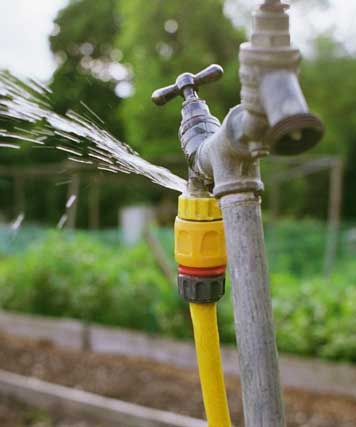Reveal Concealed Water Line Leaks: Six Tested Detection Methods
Reveal Concealed Water Line Leaks: Six Tested Detection Methods
Blog Article
Everyone is bound to have his or her own assumption in relation to Finding hidden leaks.

Early detection of dripping water lines can mitigate a prospective calamity. Apart from conserving you money, it will certainly reduce the worry and stress. The moment you discover a leakage, calling your plumber for repair work is the most effective solution. Some small water leakages might not be visible. If you can not identify it with your naked eyes, here are some hacks that assist.
1. Take A Look At the Water Meter
Every residence has a water meter. Checking it is a guaranteed manner in which aids you uncover leakages. For beginners, turn off all the water sources. Guarantee nobody will certainly purge, make use of the tap, shower, run the cleaning machine or dishwasher. From there, go to the meter and watch if it will alter. Considering that no person is utilizing it, there need to be no activities. If it relocates, that shows a fast-moving leakage. Likewise, if you detect no changes, wait an hour or two and check back again. This suggests you might have a slow-moving leakage that might also be underground.
2. Inspect Water Consumption
Analyze your water costs and also track your water usage. As the one paying it, you should notice if there are any discrepancies. If you detect sudden changes, regardless of your usage being the same, it means that you have leaks in your plumbing system. Bear in mind, your water costs must drop under the exact same range every month. An unexpected spike in your expense indicates a fast-moving leak.
A constant boost every month, even with the very same practices, shows you have a slow-moving leakage that's also gradually escalating. Call a plumber to extensively inspect your residential or commercial property, specifically if you feel a cozy area on your floor with piping beneath.
3. Do a Food Coloring Test
When it comes to water intake, 30% comes from toilets. If the shade somehow infiltrates your dish during that time without flushing, there's a leakage in between the storage tank and also bowl.
4. Asses Exterior Lines
Do not forget to check your outdoor water lines also. Should water seep out of the connection, you have a loose rubber gasket. One tiny leak can waste loads of water and spike your water bill.
5. Evaluate the situation and inspect
Homeowners should make it a habit to examine under the sink counters and also inside closets for any kind of bad odor or mold growth. These two warnings show a leak so prompt attention is required. Doing regular assessments, also bi-annually, can conserve you from a major issue.
Much more significantly, if you know your house is already old, keep a watchful eye on your heaters, hoses, pipes and so on. Look for stainings as well as compromising as many appliances and also pipelines have a life expectancy. They will additionally normally weaken due to tear and put on. Don't wait for it to escalate if you believe dripping water lines in your plumbing system. Call an expert plumber immediately so you don't wind up with an awful mess in your home.
Early detection of dripping water lines can alleviate a potential calamity. Some small water leakages may not be noticeable. Inspecting it is a proven means that helps you uncover leaks. One little leak can throw away lots of water and surge your water bill.
If you presume leaking water lines in your plumbing system, do not wait for it to escalate.
WARNING SIGNS OF WATER LEAKAGE BEHIND THE WALL
PERSISTENT MUSTY ODORS
As water slowly drips from a leaky pipe inside the wall, flooring and sheetrock stay damp and develop an odor similar to wet cardboard. It generates a musty smell that can help you find hidden leaks.
MOLD IN UNUSUAL AREAS
Mold usually grows in wet areas like kitchens, baths and laundry rooms. If you spot the stuff on walls or baseboards in other rooms of the house, it’s a good indicator of undetected water leaks.
STAINS THAT GROW
When mold thrives around a leaky pipe, it sometimes takes hold on the inside surface of the affected wall. A growing stain on otherwise clean sheetrock is often your sign of a hidden plumbing problem.
PEELING OR BUBBLING WALLPAPER / PAINT
This clue is easy to miss in rooms that don’t get much use. When you see wallpaper separating along seams or paint bubbling or flaking off the wall, blame sheetrock that stays wet because of an undetected leak.
BUCKLED CEILINGS AND STAINED FLOORS
If ceilings or floors in bathrooms, kitchens or laundry areas develop structural problems, don’t rule out constant damp inside the walls. Wet sheetrock can affect adjacent framing, flooring and ceilings.
https://www.servicemasterbyzaba.com/blog/how-to-detect-water-leakage-in-walls/

Hopefully you enjoyed our post on Leaking water lines. Thanks a ton for finding the time to read our short article. Are you aware of somebody who is intrigued by the topic? Please feel free to promote it. Thanks a lot for your time. Come back soon.
Problem? Contact now! Report this page